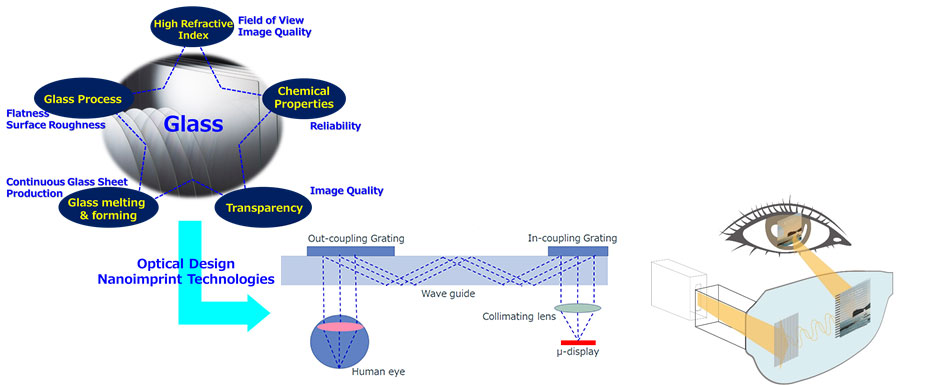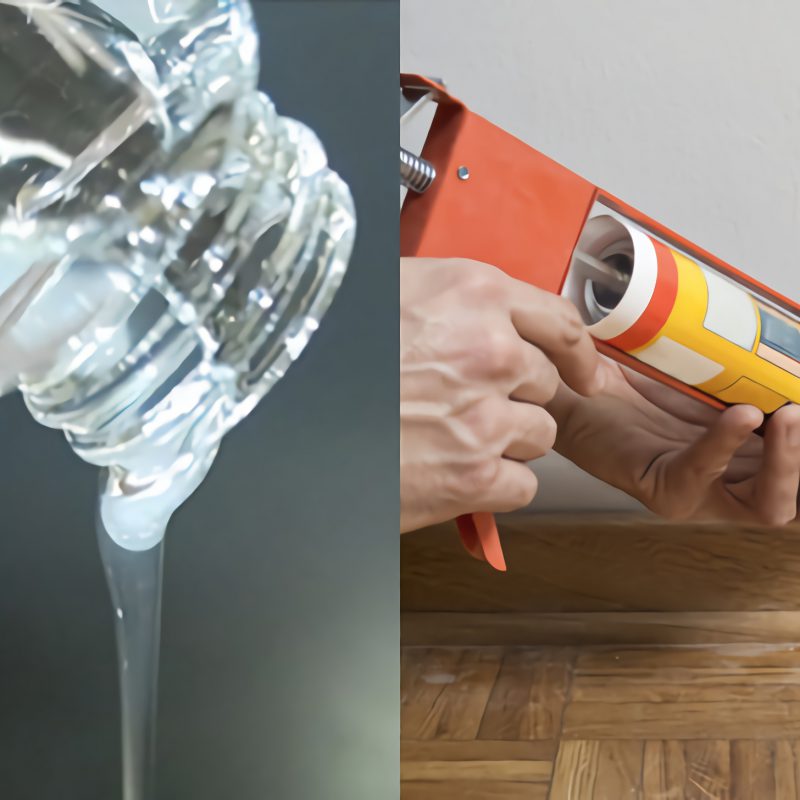Description
High refractive index & high transmittance glass substrates for “AR (Augmented reality) glasses and smart glasses.”
Product Key Features
- High refractive index
- Low absorption loss
- Flatness
- Smoothness
- Good thermal and chemical reliabilities

Recent advancement in wearable displays transforms everyday life, working environment, shopping experiences with augmented reality. AR glasses are emerging hardware for AR experiences with see-through display which overlays virtual images to mix real and digital world (aka mixed reality). As AR glasses give digital information to users as shown in the Figure above, the market is expected to grow like smartphone.

So far, AGC has provided various products in this market such as glass packaging substrates and optical components, and now we are ready for production of high refractive index glass substrates after years of R&D efforts.
Because AR images propagate inside the glass by TIR, the glass material needs to have high refractive index (large FOV) and low propagation loss (see Appendix). Also equally important are glass processing technologies to enable very flat and smooth surface. Our newly developed high refractive index meets all these requirements. We will launch large volume manufacturing facilities in Japan, and plans to expand production to support emerging applications as well as AR glasses & head-up display markets.

Appendix – By increasing the refractive index of glass, light can propagate at larger critical angle by TIR (total internal reflection). This means image can be input at wider incident angle (i.e. large original image area) – see left Figure below. Also, by having a large output DOE area, it makes possible to have more tolerance against eye position movement – see right Figure below. For these reasons, high refractive index and large DOE area can support more natural visions for users providing real AR experiences.

Product Applications
- Glass waveguide used on AR/MR smart glasses
- Glass waveguide for automotive head-up display



